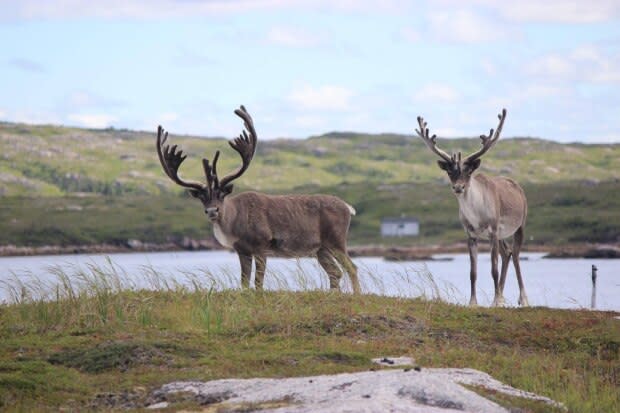How are the relocated Grey Islands caribou doing? N.L. Wildlife hopes to know soon
The provincial government is hoping to get an update soon on its efforts to restore a once-flourishing population of caribou on a pair of islands off the coast of the Northern Peninsula.
Wayne Barney, a wildlife biologist with the Department of Fisheries and Land Resources, says 12 animals were flown to the tiny Grey Islands in March — six each on Bell Island and Groais Island.
Barney said the caribou appeared to be doing well during a visit to the islands in May, but wildlife officers will be doing "a more intentional survey" on the islands once they are snow-covered.
"I expect the very best, but I hope, being realistic, that we will get a portion of those animals, those females that we put out there, will have calves and that those calves would have survived," he told CBC Radio's Newfoundland Morning.
"The islands have a good history of producing good numbers of caribou, so we're hoping that we can certainly avail of that."
Our island populations were used, historically, as a means to be able to protect our bigger island population. - Wayne Barney
While moving a dozen caribou to a couple of islands 10 kilometres off the coast of Newfoundland might seem like a lot of work, Barney said having a subpopulation away from the island is important for conservation.
"Our island populations were used, historically, as a means to be able to protect our bigger island population. If something catastrophic ever happened to the majority of our caribou on the island [of Newfoundland], we would still have caribou on these coastal islands," he said.
Track record of relocation
As a result, Barney said relocating caribou to small coastal islands is not an uncommon process, with 23 such resettlements since 1961, with all but three deemed a success.
He said the Grey Islands were the site of one of the relocations more than 50 years ago.
"In 1964, there were eight animals introduced to the Grey Islands … those eight were put on Bell Island. [The population] grew over time, in the early '90s, to about 600."

But because of the high density of caribou and predators like coyotes finding their way to islands, Barney said the population dwindled.
This time around, he said the wildlife department would like to see a sustained population of around 100 to 200 animals for both islands. Hunting would be a consideration if the herds reach the desired numbers.
Barney said he's optimistic the caribou will settle down well in their new home and there'll be some new young calves on Grey Islands during the survey this winter.
Read more from CBC Newfoundland and Labrador

